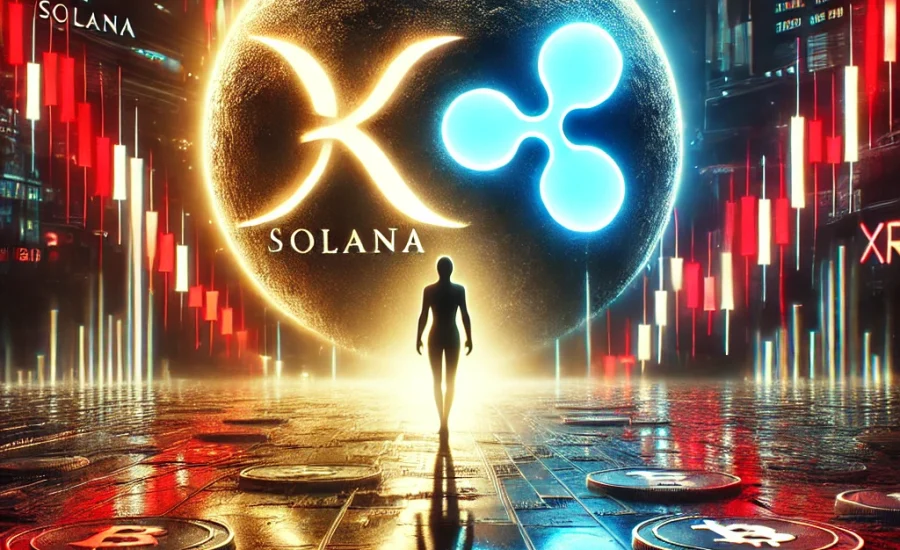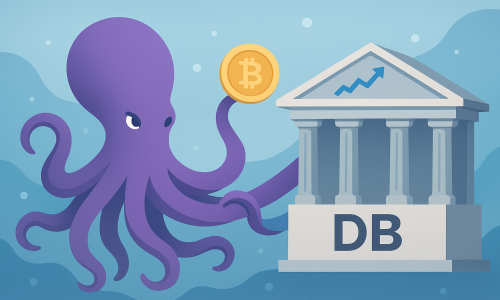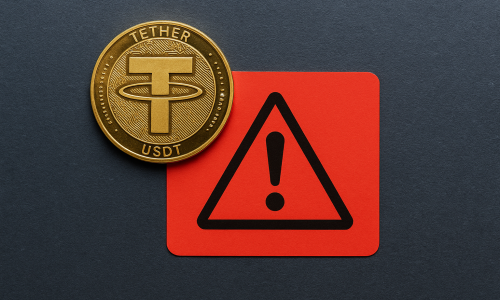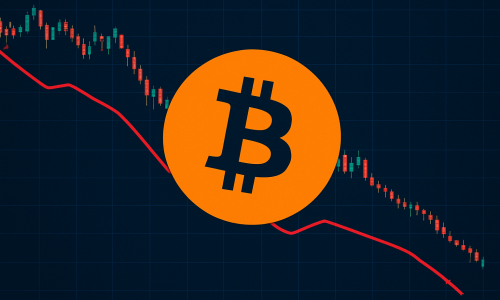Introduction
The cryptocurrency market has once again found itself at the mercy of macroeconomic pressures, as investors pulled a staggering $415 million from digital assets. The primary driver behind this mass exodus is the U.S. Federal Reserve’s continued hawkish stance, which has led to risk-averse sentiment among institutional and retail investors.
Despite this widespread downturn, two major cryptocurrencies—Solana (SOL) and XRP (Ripple)—have emerged as strong contenders, defying the broader trend. Unlike Bitcoin (BTC) and Ethereum (ETH), which have faced notable sell-offs, Solana and XRP have demonstrated resilience, attracting investors looking for stability and long-term potential.
The Federal Reserve’s Hawkish Stance And Its Impact On Crypto Markets
What Does a Hawkish Fed Mean for Crypto?
The Federal Reserve has been tightening its monetary policy in response to persistent inflation. When the Fed adopts a hawkish stance—raising interest rates or signaling higher-for-longer policies—it generally discourages investments in high-risk assets like cryptocurrencies.
Higher interest rates make traditional assets like government bonds and savings accounts more attractive, leading to capital outflows from speculative markets. This effect has been evident in the crypto industry, where major assets like Bitcoin and Ethereum have faced price declines amid declining investor confidence.
Massive Crypto Outflows: A Sign of Growing Investor Fear
According to recent reports, the total outflows from the cryptocurrency market reached $415 million, marking one of the highest withdrawals in recent months. Bitcoin alone accounted for $260 million of these outflows, while Ethereum saw a decline of $85 million. The remaining outflows affected various altcoins and crypto investment products.
However, despite this negative sentiment, Solana and XRP have displayed an inverse correlation, attracting investor interest while most of the market witnessed sell-offs.
Why Are Solana (SOL) And XRP (Ripple) Resisting The Downturn?
Institutional and Retail Confidence in Solana
Solana has proven to be a standout performer in 2024, and its momentum continues into 2025. Unlike other altcoins struggling to maintain investor interest, Solana has received growing institutional support due to its high-speed blockchain network and increasing adoption within the decentralized finance (DeFi) and NFT ecosystems.
Key Factors Driving Solana’s Strength
Growing Institutional Investment: Recent reports indicate that major hedge funds and asset managers have increased their exposure to Solana. The network’s low transaction fees and high scalability make it a preferred alternative to Ethereum.
NFT and DeFi Adoption: Solana continues to dominate the NFT space, with Solana-based NFT projects outperforming many Ethereum-based collections. Its DeFi sector is also expanding, contributing to the increasing demand for SOL tokens.
Technical Strength and Market Liquidity: While other cryptocurrencies have seen massive sell-offs, Solana’s trading volume remains stable, suggesting strong liquidity and market confidence.
XRP’s Legal Clarity and Institutional Backing
XRP, the native token of Ripple, has had a rollercoaster journey due to its prolonged legal battle with the U.S. Securities and Exchange Commission (SEC). However, recent legal victories have given XRP a renewed sense of legitimacy, attracting institutional investors who were previously hesitant.
Key Factors Supporting XRP’s Stability
Legal Wins Against the SEC: Ripple secured crucial victories in court, reinforcing the argument that XRP is not a security. This decision has helped remove regulatory uncertainty that previously kept many investors away.
Global Banking Adoption: Ripple’s technology is widely used in cross-border payments by major financial institutions, increasing its real-world utility.
Increased Market Demand: Despite crypto outflows, XRP has seen an uptick in whale activity, indicating that large investors are accumulating XRP at current price levels.
How Solana And XRP Are Positioning Themselves For The Future?
Solana’s Long-Term Growth Trajectory
Solana is expanding beyond NFTs and DeFi, with growing use cases in gaming, Web3 applications, and even artificial intelligence (AI) integration. The blockchain’s ability to process over 65,000 transactions per second (TPS) has positioned it as a leading player in the industry.
Furthermore, Solana’s recent partnerships with major tech firms and Web3 developers suggest that its adoption will continue to rise. If the Federal Reserve eventually shifts toward a more dovish monetary policy, Solana could be one of the biggest beneficiaries of a renewed bull market.
XRP’s Role in the Evolving Financial Ecosystem
Ripple is actively working to redefine international remittances. With more central banks exploring CBDCs (Central Bank Digital Currencies) and blockchain-based payment solutions, XRP is uniquely positioned to capitalize on this shift.
Additionally, Ripple’s recent expansion in the Asia-Pacific and Middle Eastern markets has strengthened its global presence. As more banks and financial institutions integrate RippleNet, the demand for XRP could see a substantial increase.
Potential Risks And Challenges
Despite their resilience, both Solana and XRP face potential risks that investors should consider:
1. Regulatory Uncertainty
While XRP has won key legal battles, regulatory bodies such as the SEC and European regulators could still impose stricter rules on crypto assets.
Solana, although largely unaffected by legal scrutiny so far, could face challenges if governments introduce new restrictions on DeFi platforms.
2. Market Volatility
If macroeconomic conditions worsen, even strong-performing assets like Solana and XRP could see temporary price declines.
Liquidity crises or unexpected security breaches on their respective networks could also impact investor sentiment.
3. Competition from Emerging Cryptos
New Layer-1 blockchain solutions could challenge Solana’s dominance in the high-speed transaction space.
XRP could face competition from alternative cross-border payment solutions, including stablecoins and CBDCs.
Conclusion
While the overall cryptocurrency market is experiencing significant outflows, Solana and XRP stand as beacons of resilience. Institutional confidence, growing adoption, and strong technical fundamentals have allowed these two assets to defy the trend, making them attractive choices for long-term investors.
As the Federal Reserve continues its battle against inflation, crypto markets will likely remain volatile. However, once monetary policies ease and investor confidence returns, Solana and XRP could emerge as leading forces in the next crypto bull run. For those looking for stability and growth potential in the crypto space, SOL and XRP remain two of the best assets to watch in 2025.



